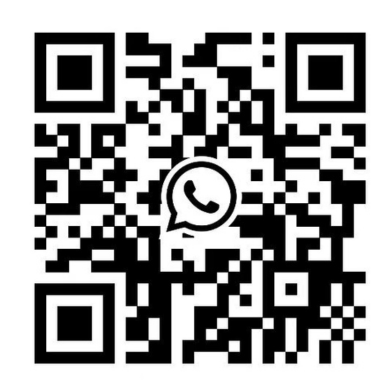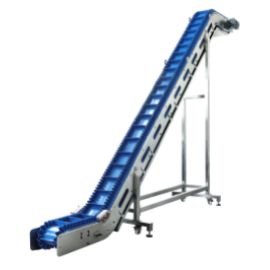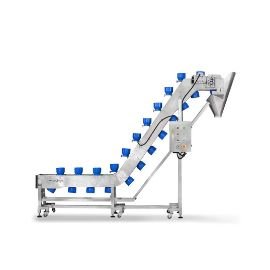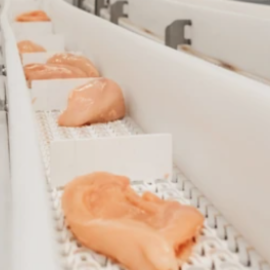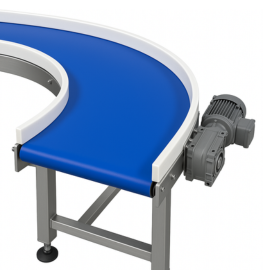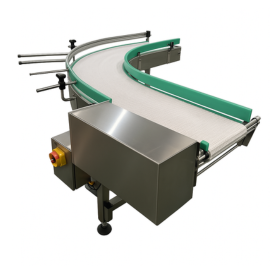
Product Definition: More Than Just a “Fish Eye,” It’s the Cornerstone of Precision Motion
A Rod End Bearing, also known in the industry as a Heim joint, Rose joint, or spherical rod end bearing, is a precision mechanical articulating joint. Its core structure features an eye-shaped head with an integrated spherical ball, allowing the connected rod to handle both tensile and compressive loads while accommodating angular misalignment. This unique design of rod ends eliminates the strict alignment requirements of traditional connectors, offering greater flexibility in mechanical design.
Historical Insight: The rod end bearing was originally developed during World War II for the German Air Force to enhance the flexibility and reliability of aircraft control systems. After the war, this technology was introduced to the civilian sector and popularized by the H.G. Heim Company in North America and Rose Bearings Ltd. in the UK, making “Heim joint” and “Rose joint” synonymous with the product. Today, these rod end & spherical bearings are indispensable basic mechanical components worldwide.

Core Advantages: Why Choose Our Rod End Bearings?
In complex industrial applications, the performance of every component is critical. Our rod end bearings have become the trusted choice for engineers and purchasers globally, thanks to these core advantages:
- High Load Capacity: Through optimized internal structures and high-strength materials, our rod ends can withstand significant radial and axial loads, ensuring connection stability under severe working conditions.
- Angular Misalignment Compensation: The spherical inner ring design allows for a swing angle of up to 20 degrees (depending on the model), effectively absorbing installation errors and mechanical deformations during operation, preventing seizure and stress concentration.
- Self-Lubricating & Maintenance-Free: Our flagship self-lubricating (PTFE-lined) series requires no additional lubricant throughout its service life. This dramatically reduces maintenance costs and downtime, making it ideal for applications that are difficult to access or have high cleanliness requirements.
- Extended Service Life: Whether you choose the wear-resistant PTFE-lined self-lubricating type or the metal-to-metal type that requires regular lubrication, we use top-grade, durable materials processed with precision and heat treatment to ensure stable performance throughout the designed lifespan.
- Ease of Installation and Adjustment: We offer both female rod end ball joint (SI series) and male rod end ball joint (SA series) standard mounting options. The threaded shank provides ample adjustment margin, allowing for fine-tuning of the length after assembly to achieve optimal performance.


Wide Range of Applications: The Ubiquitous Connection Expert
Thanks to their unique functionality, rod end bearings and heim joints are widely used across various sectors of the national economy, serving as key components for achieving precise transmission and linkage.
|
Industry Sector
|
Specific Applications
|
|
Industrial Automation
|
Robot joints, cylinder/hydraulic cylinder end connections, conveyor belt tensioning devices, packaging machinery linkages.
|
|
Automotive Industry
|
Steering tie rods for racing and high-performance cars, heim joint suspension systems, gear shift linkages. A popular choice for heim joint kits.
|
|
Aerospace
|
Control rods for ailerons and flaps, landing gear retraction mechanisms.
|
|
Construction Machinery
|
Hydraulic cylinder connection points for loaders and excavators, control linkages for various heavy equipment.
|
|
Agricultural Machinery
|
Steering and height adjustment mechanisms for tractors and harvesters.
|
|
Marine Manufacturing
|
Rudder control systems, sailboat rigging tensioners.
|
Professional Selection Guide: How to Choose the Right Product?
Choosing the correct joint rod end is the first step to guaranteeing equipment performance and longevity. Please follow this guide, considering your actual working conditions, to systematically select the appropriate rod end bearing.
4.1 Choosing the Lubrication Type
- Self-Lubricating (PTFE-Lined): Suitable for low-to-medium speed, high-load applications that require maintenance-free operation or have cleanliness requirements. This is the mainstream choice in the market.
- Metal-to-Metal: Ideal for extremely high-load, low-speed oscillating, or static connection applications. Requires regular grease replenishment to prevent wear and seizure.
4.2 Load Calculation and Matching
- Static Load (C₀): The maximum load a bearing can withstand when stationary or with very slow oscillation. When selecting, the maximum static load of the equipment must be less than the rated static load of the bearing.
- Dynamic Load (C): The constant load a bearing can endure for a specific life (typically one million oscillations). For dynamic applications, a complex calculation based on actual working load, swing angle, and desired life is needed. For preliminary selection, ensure the working load is well below the rated dynamic load.
4.3 Materials and Surface Treatment
- Rod Body Material: Standard products use high-quality carbon steel. For applications requiring rust prevention, stainless steel or carbon steel with galvanized, nickel-plated, or chrome-plated treatment is available.
- Ball Material: Typically high-carbon chromium bearing steel (GCr15), heat-treated and precision-ground to ensure high hardness and wear resistance.
4.4 Thread Type and Direction
- Male/Female Threads: Choose between male rod end ball joint (SA series) or female rod end ball joint (SI series) based on your connection structure.
- Left/Right-Hand Threads: Standard products have right-hand threads. In applications where the distance between two ends needs to be adjusted by rotating the rod, one end typically uses a right-hand thread and the other a left-hand thread (indicated by an “L” suffix).


Installation and Maintenance Guide
1 Installation Precautions
- Coaxiality: Ensure the connected ends are as coaxial as possible during installation to minimize the initial deflection angle and leave room for deformation during operation.
- Press-Fitting: Use specialized tools to apply force evenly on the end face of the bearing housing. Never strike the ball or rod body to install, as this will severely damage the bearing.
- Thread Tightening: Use a torque wrench to lock the nut to the recommended torque, ensuring a secure connection and preventing loosening under vibration.
- Cleanliness: The installation area should be kept clean to prevent dust, chips, and other foreign matter from entering the bearing.
2 Maintenance and Inspection
- Self-Lubricating Type: Essentially maintenance-free. However, visually inspect the PTFE liner for wear and excessive clearance periodically. Replace when the clearance exceeds the design limit.
- Metal-to-Metal Type: Requires regular lubrication with grease (e.g., every 100 hours or monthly) via the grease fitting until fresh grease purges from the seals.
- Regular Inspection: For all types of rod ends, regularly check if the fastening nuts are loose and if the rod body is deformed or cracked.
Heim Joint vs. Ball Joint: Key Differences and Selection
When choosing an articulating joint, engineers often weigh the options between a Heim joint (i.e., a rod end bearing) and a ball joint. While both facilitate multi-angle motion transfer, their design, performance, and suitable applications differ significantly. This section clarifies the heim joint vs ball joint debate.
|
Feature
|
Heim Joint (Rod End Bearing)
|
Ball Joint
|
|
Structure
|
Exposed spherical bearing in “eye” casing, easy to inspect.
|
Sealed ball stud with dust boot protection.
|
|
Load Type
|
Optimized for high axial loads (tension/compression).
|
Optimized for radial loads (wheel support).
|
|
Precision
|
High rigidity, minimal play, direct force transmission.
|
Polymer bushing absorbs vibration, less precise.
|
|
Maintenance
|
Open design; metal types need regular lubrication.
|
Sealed design; often maintenance-free for life.
|
|
Best For
|
Racing, robotics, high-precision control systems.
|
Passenger cars, comfort-focused applications.
|
Selection Advice:
•When your application requires handling high tensile or compressive forces and demands maximum precision and rigidity, the Heim joint is the superior choice.
•When your application primarily involves radial support loads and prioritizes long life, low maintenance, and vibration damping, the ball joint is more suitable.

- SA Series (Male Thread) Specifications
- SI Series (Female Thread) Specifications
Complete Product Specifications
We offer a full range of SA (male thread) and SI (female thread) rod ends, covering common thread sizes from M5 to M36 to meet your diverse design needs.
|
PART NO
|
d
|
B
|
dk
|
C1 max
|
d4 max
|
Thread (G 6H)
|
h
|
L4 min
|
L2 max
|
R1a
|
Swing Angle (a° ±)
|
Dynamic Load (dyn. C) KN
|
Static Load (stat. C) KN
|
Weight (kg)
|
|
SA5T/K
|
5
|
8
|
11.11
|
6
|
18
|
M5×0.8
|
33
|
19
|
42
|
0.3
|
13
|
5.7
|
6.0
|
0.013
|
|
SA6T/K
|
6
|
9
|
12.7
|
6.75
|
20
|
M6×1.0
|
36
|
21
|
46
|
0.3
|
13
|
7.2
|
7.65
|
0.02
|
|
SA8T/K
|
8
|
12
|
15.875
|
9
|
24
|
M8×1.25
|
42
|
25
|
54
|
0.3
|
14
|
11.6
|
12.9
|
0.038
|
|
SA10T/K
|
10
|
14
|
19.05
|
10.5
|
28
|
M10×1.5
|
48
|
28
|
62
|
0.3
|
13
|
14.5
|
18.0
|
0.055
|
|
SA12T/K
|
12
|
16
|
22.225
|
12
|
32
|
M12×1.75
|
54
|
32
|
70
|
0.3
|
13
|
17
|
24
|
0.85
|
|
SA14T/K
|
14
|
19
|
25.4
|
13.5
|
36
|
M14×2.0
|
60
|
36
|
78
|
0.3
|
16
|
24
|
31
|
0.14
|
|
SA16T/K
|
16
|
21
|
28.575
|
15
|
42
|
M16×2.0
|
66
|
37
|
87
|
0.3
|
15
|
28.5
|
39
|
0.21
|
|
SA18T/K
|
18
|
23
|
31.75
|
16.5
|
44
|
M18×1.5
|
72
|
41
|
94
|
0.3
|
15
|
42.5
|
47.5
|
0.29
|
|
SA20T/K
|
20
|
25
|
34.925
|
18
|
50
|
M20×1.5
|
78
|
45
|
103
|
0.3
|
14
|
42.5
|
57
|
0.38
|
|
SA22T/K
|
22
|
28
|
38.1
|
20
|
54
|
M22×1.5
|
84
|
48
|
111
|
0.3
|
15
|
57
|
68
|
0.48
|
|
SA25T/K
|
25
|
31
|
42.85
|
22
|
60
|
M24×2
|
94
|
55
|
124
|
0.3
|
15
|
68
|
85
|
0.64
|
|
SA28T/K
|
28
|
35
|
47.6
|
24
|
66
|
M27×2
|
103
|
62
|
136
|
0.3
|
15
|
86
|
107
|
0.8
|
|
SA30T/K
|
30
|
37
|
50.8
|
25
|
70
|
M30×2
|
110
|
66
|
145
|
0.3
|
17
|
88
|
114
|
1.1
|
|
SA35T/K
|
35
|
43
|
57.1
|
28
|
81
|
M36×3
|
140
|
85
|
180.5
|
0.3
|
16
|
–
|
–
|
1.64
|
|
PART NO
|
d
|
B
|
dk
|
C1 max
|
d4 max
|
Thread (d4 min)
|
h
|
L4 min
|
L2 max
|
L4
|
W
|
d1
|
d2
|
Swing Angle (a° ±)
|
V°
|
Dynamic Load (dyn. C) KN
|
Static Load (stat. C) KN
|
Weight (kg)
|
|
SI5T/K
|
5
|
8
|
11.11
|
6
|
18
|
M5×0.8
|
27
|
10
|
36
|
4
|
9
|
9
|
11
|
0.3
|
13
|
5.7
|
6
|
0.016
|
|
SI6T/K
|
6
|
9
|
12.7
|
6.75
|
20
|
M6×1
|
30
|
12
|
40
|
5
|
11
|
10
|
13
|
0.3
|
13
|
7.2
|
7.65
|
0.022
|
|
SI8T/K
|
8
|
12
|
15.875
|
9
|
24
|
M8×1.25
|
36
|
16
|
48
|
5
|
14
|
12.5
|
16
|
0.3
|
14
|
11.6
|
12.9
|
0.047
|
|
SI10T/K
|
10
|
14
|
19.05
|
10.5
|
28
|
M10×1.5
|
43
|
20
|
57
|
6.5
|
17
|
16
|
19
|
0.3
|
13
|
14.5
|
18
|
0.077
|
|
SI12T/K
|
12
|
16
|
22.225
|
12
|
32
|
M12×1.75
|
50
|
22
|
66
|
6.5
|
19
|
17.5
|
22
|
0.3
|
13
|
17
|
24
|
0.100
|
|
SI14T/K
|
14
|
19
|
25.4
|
13.5
|
36
|
M14×2
|
57
|
25
|
75
|
8
|
22
|
20
|
25
|
0.3
|
16
|
24
|
31
|
0.160
|
|
SI16T/K
|
16
|
21
|
28.575
|
15
|
42
|
M16×2
|
64
|
28
|
85
|
8
|
22
|
22
|
27
|
0.3
|
15
|
28.5
|
39
|
0.230
|
|
SI18T/K
|
18
|
23
|
31.75
|
16.5
|
44
|
M18×1.5
|
71
|
32
|
93
|
10
|
27
|
25
|
31
|
0.3
|
15
|
42.5
|
47.5
|
0.320
|
|
SI20T/K
|
20
|
25
|
34.925
|
18
|
50
|
M20×1.5
|
77
|
33
|
102
|
10
|
30
|
27.5
|
34
|
0.3
|
14
|
42.5
|
57
|
0.420
|
|
SI22T/K
|
22
|
28
|
38.1
|
20
|
54
|
M22×1.5
|
84
|
37
|
111
|
12
|
32
|
30
|
38
|
0.3
|
15
|
57
|
68
|
0.540
|
|
SI25T/K
|
25
|
31
|
42.85
|
22
|
60
|
M24×2
|
94
|
42
|
124
|
12
|
36
|
33.5
|
42
|
0.3
|
15
|
68
|
85
|
0.73
|
|
SI28T/K
|
28
|
35
|
47.6
|
24
|
66
|
M27×2
|
103
|
51
|
136
|
14
|
41
|
37
|
46
|
0.3
|
15
|
86
|
107
|
0.82
|
|
SI30T/K
|
30
|
37
|
50.8
|
25
|
70
|
M30×2
|
110
|
51
|
145
|
15
|
41
|
40
|
50
|
0.3
|
17
|
88
|
114
|
1.10
|
|
SI35T/K
|
35
|
43
|
57.1
|
28
|
81
|
M36×3
|
125
|
56
|
160.5
|
17
|
50
|
46
|
58
|
0.3
|
16
|
–
|
–
|
1.600
|
Note: Some models offer different thread pitches, such as SI10T/K-1 (M10x1.25). Please consult our sales engineers for details.
Related Product
Where are your rod end bearings manufactured? How is quality guaranteed?
Our products are manufactured in modern, ISO 9001 certified factories. We implement full-process quality control, from raw material procurement to final product inspection, including dimensional accuracy, material hardness, load capacity, and life testing, to ensure every product that leaves our factory meets or exceeds industry standards.
Self-lubricating (PTFE-lined) vs. Metal-to-Metal: Which one should I choose?
The choice depends on your application. If your equipment operates under high loads and low oscillation speeds and can be regularly maintained, the metal-to-metal type offers the highest load capacity. If your application requires maintenance-free operation, a clean environment, or is difficult to access for service, the self-lubricating type is the ideal choice. For most industrial applications, we recommend the self-lubricating typ
Do you offer left-hand thread rod ends?
Yes, we provide left-hand thread products. Simply add the suffix “L” to the standard model number when ordering, for example, “SI12T/K-L”. Left and right-hand threads are often used in pairs in linkage mechanisms where length needs to be precisely adjusted by rotating the rod.
What is the expected lifespan of a rod end bearing?
The lifespan of a rod end bearing is influenced by multiple factors, including actual load, swing angle, oscillation frequency, operating temperature, and environmental contamination. Under proper selection and installation, our self-lubricating bearings can achieve millions of maintenance-free cycles. You can provide our engineers with detailed operating conditions to get a more accurate life estimation.
How do I know when a rod end bearing needs to be replaced?
The main indicator is “play” or clearance. If you can feel significant radial or axial play when moving the connected rod by hand, or hear a “clicking” sound from the joint during operation, it usually means the bearing is excessively worn and should be replaced promptly. For critical applications, we recommend establishing a regular inspection and replacement schedule.
Send Your Inquiry Today

